A stage created with local seniors and youth at Songjeong-dong Senior Welfare Center
Exploring generational conflict and the potential of socially engaged art
Students from the Department of Theatre and Film at Hanyang University collaboratively created and staged the forum theatre piece Welcome to Kakkeukka Pokkeukkae. Presented on the afternoon of June 9 at the auditorium of the Songjeong-dong Senior Welfare Center in Seongdong-gu, Seoul, the performance was not a traditional, passive theatre piece. At points when tensions peaked on stage, audience members were invited to share their opinions, question the characters’ choices, and suggest alternative directions. Their voices blended into the narrative, and the actors responded in real time, reshaping the story together with the audience. In this way, the performance was completed “together.”
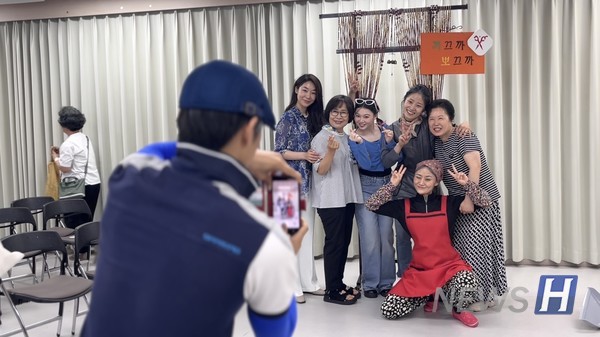
The stage served as a shared space to confront generational conflict and search for potential resolutions. Young and old, actors and audience, the university and the local community gathered in one place to face each other through theatre. What made this performance special was that it didn’t just depict conflict but invited participants to collectively rewrite and resolve it. By adopting a participatory format, the production demonstrated art’s potential as a vehicle for social connection.
This performance was part of Hanyang University’s 2025 University Innovation Support Project and was developed from March through a collaborative process linked to QBL and IC-PBL classes. The students explored the Songjeong-dong neighborhood, incorporating its local characteristics into the script. The Songjeong-dong Senior Welfare Center, which has maintained an ongoing cultural partnership with Hanyang University, served as the venue. Local seniors actively participated as audience members, reflecting on their own lives and sharing in the dialogue.
What was the main conflict of the piece?
The main setting of the play is “Kakkeukka Pokkeukka,” a hair salon nestled in a Songjeong-dong alley. The concept was inspired by a real long-standing neighborhood salon. The core conflict centers around Young-sook, a hairdresser who has kept her salon in the same spot for over 20 years, and Da-eun, a young hairdresser who opens a new salon called “Glow Hair” across the street. When a foreign tourist visits Young-sook’s salon and ends up with an unintended hairstyle due to a communication breakdown, they later get it corrected at Da-eun’s salon and post the story on YouTube, intensifying the conflict. As “fixing a failed haircut” videos go viral on social media, Young-sook believes Da-eun is deliberately defaming her, deepening the tension.
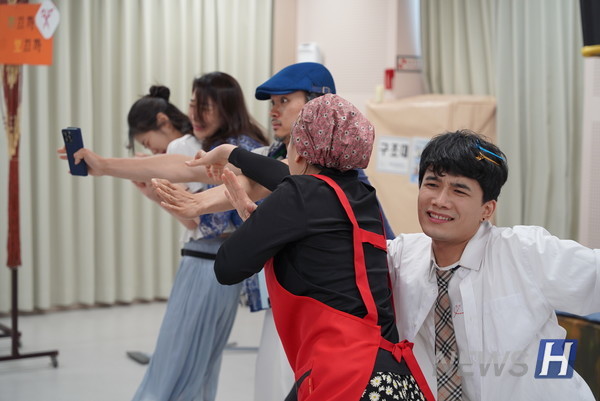
The piece captured the atmosphere and emotions unique to Songjeong-dong. Director Park Yeon-ju (MA student, Department of Theatre and Film) shared, “The neighborhood salons, the seniors’ speech patterns, and the overall business vibe all served as starting points for the script.” Songjeong-dong is a space where the past and present, tradition and trends coexist. On one side, you find long-standing salons; on the other, the area expands into Seongsu-dong’s youthful start-up scene. Park noted, “The coexistence of these contrasting elements within one neighborhood became a major motif for the play.”
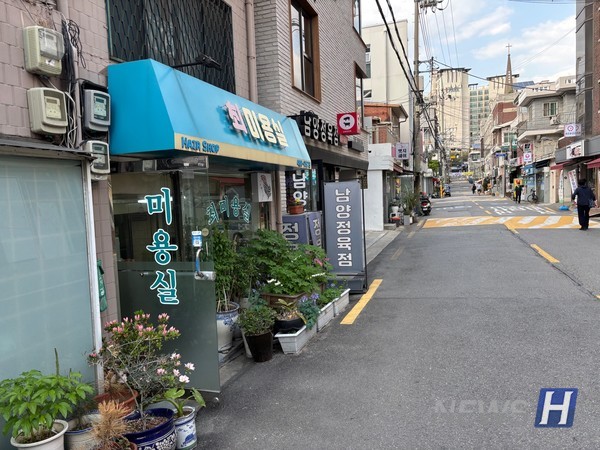
A forever 토토사이트 of questions and responses
The piece adopted the “Forum Theatre” format created by Brazilian director Augusto Boal. The play intentionally avoided a definitive ending, proceeding instead with an open structure in which the audience posed questions, offered suggestions, and intervened in the storyline. During the performance, seniors enthusiastically raised their hands, pointed out character behaviors, and proposed solutions.
For instance, one senior suggested, “Why not take down the YouTube video first and make a new video together to resolve the misunderstanding?” The actors immediately integrated this suggestion, restructuring the ending on the spot. Park commented, “When an unexpected proposal emerged, the actors’ spontaneous reactions in character created new narrative flows, showcasing the true power of theatre.”
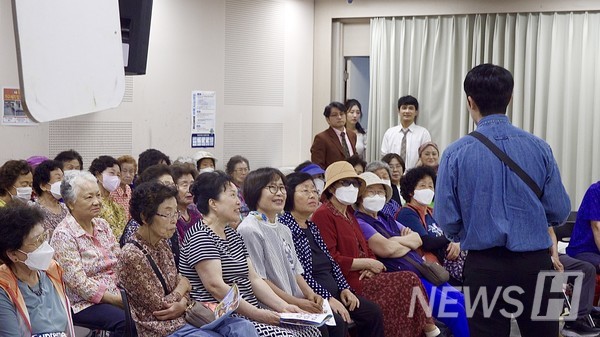
The real-time interaction also influenced the actors. Lead actor Park Si-hyun (MA student, Department of Theatre and Film), who played the 64-year-old hairdresser Young-sook, shared, “Before rehearsals, I found the slower pace of the older generation frustrating. But through this project, I came to understand their life rhythms and attitudes.” He added, “I realized I had been harboring distance and stereotypes toward them.”
To embody Young-sook, Park visited local salons, observed daily routines, and referenced documentaries to shape the character. “The slow pace, pride in their work, and adherence to familiar methods were key elements,” he explained. “Through repeated practice, I began to see the life philosophies behind their stubbornness, and the once-unfamiliar world gradually felt closer.” Park reflected, “When seniors said I felt like a real neighborhood resident, I sensed that we had achieved more than simple representation — we had achieved genuine empathy.”
Social art and the possibility of coexistence
Initially, students felt awkward and hesitant in interacting with the seniors. Park noted, “There was some discomfort and uncertainty about what to say.” However, as visits and neighborhood explorations continued, this atmosphere changed. “The seniors approached us first and engaged with us, allowing the students to relax. This opened up real exchange and shifted our approach to the work,” she added.
Professor Kim Seok-yun of the Department of Theatre and Film remarked, “Through direct dialogue with seniors and reshaping scenes in response to audience questions, students experienced the social role of art firsthand. The abstract concept of social art became a tangible experience.”
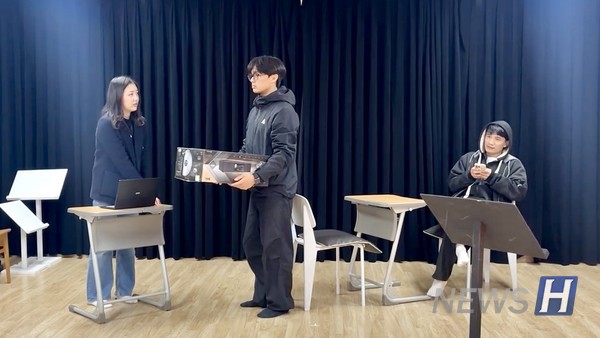
He emphasized, “In guiding the narrative with the audience, students learned to design a balanced perspective rather than taking sides. This process of collectively solving problems is the essence of forum theatre.” He added, “Social art is not merely about producing an end product — it’s an exploration of what role artistic acts can play within social relationships.” Professor Kim concluded, “This project was an opportunity for both the community and the university to reflect on and practice the social role of art. The students gained a direct experience of community sensitivity and the potential for expanding socially engaged art.”
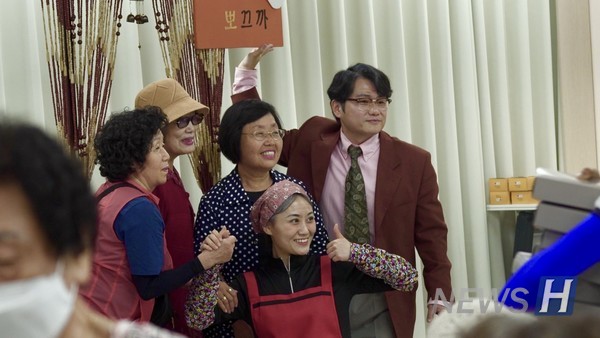
Professor Kim pointed out that while institutional frameworks for participatory arts are being established in Korea, it will take time for these practices to take root in civil society. According to a 2023 Seoul Foundation for Arts and Culture survey on cultural participation, over half of citizens responded that they “lack opportunities to engage in artistic activities,” citing lack of time, money, and information as primary barriers. He stressed, “In this context, it is even more important for universities to create new connections through art in collaboration with local communities.”
This production served as a practice of confronting conflicts and sharing questions within a space where generations, neighborhoods, schools, and communities came together. The experience of hearing each other’s perspectives and crafting solutions together on stage offered a real glimpse into the potential for coexistence.

 '한양위키' 키워드 보기
'한양위키' 키워드 보기